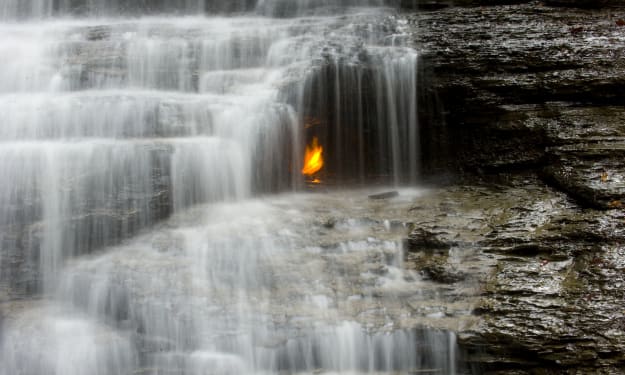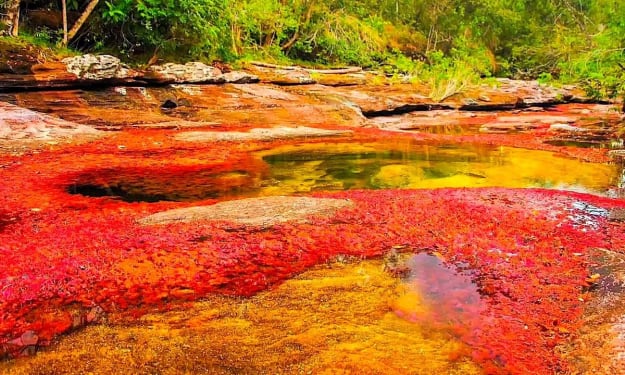
Grasslands are one of the most fascinating and diverse ecosystems found on our planet. They are characterized by vast open spaces covered with grasses and herbaceous plants, and are home to a wide variety of plant and animal species.
Grasslands are distributed across every continent except Antarctica and can be found in a range of climatic regions. They are typically found in areas with low to moderate rainfall, where the precipitation is insufficient to support the growth of large trees. This unique combination of conditions creates a habitat that is home to a wide variety of plant and animal species, many of which are found nowhere else in the world.
One of the most distinctive features of grasslands is their lack of trees. This allows for a more open landscape with greater visibility, making it an ideal habitat for many different species of animals, such as bison, gazelles, pronghorns, and zebras, which rely on the grasses for food and cover.
Grasslands are also important for their role in the global carbon cycle. Grasses store carbon in their roots, which can help to mitigate climate change. Additionally, they are important for agriculture and grazing livestock, making them critical for the livelihoods of many people around the world.
However, grasslands are under threat from human activities such as overgrazing, conversion to cropland, and urbanization. These activities can lead to soil erosion, loss of habitat, and reduced biodiversity. It is important to protect and conserve grasslands, not only for the species that rely on them but also for their ecological and economic importance.
By working to conserve and restore grasslands, we can ensure that these important ecosystems continue to thrive for generations to come. This can be achieved through a range of measures, including sustainable land management practices, habitat restoration, and the protection of key areas of grassland habitat.Continued...
One example of a successful grassland conservation initiative is the African Parks Network, which has been working to restore and protect grasslands in African countries such as Malawi, Zambia, and Rwanda. Through their efforts, they have been able to restore degraded grasslands, improve soil health, and increase biodiversity.
Another important aspect of grassland conservation is the involvement of local communities. In many cases, it is the people who live in and around grassland areas who have the greatest stake in their conservation. By engaging with these communities and providing them with the tools and resources they need to manage their natural resources sustainably, we can ensure that grasslands are protected for future generations.
Grasslands are not only important for their ecological and economic value, but also for their cultural importance. Many indigenous communities around the world have deep cultural connections to grasslands and the species that inhabit them. By working to protect and conserve grasslands, we can also help to preserve these important cultural traditions.
In conclusion, grasslands are a vital and diverse ecosystem that play an important role in the global carbon cycle, support agriculture and grazing, and are home to a wide variety of plant and animal species. However, they are under threat from human activities and climate change. It is important that we work to protect and conserve grasslands, through a range of measures such as sustainable land management practices, habitat restoration, and community engagement, to ensure that these important ecosystems continue to thrive for generations to come.Continued...
One promising approach to grassland restoration and conservation is the use of prescribed fire. Prescribed fire involves the controlled burning of grasslands to mimic the natural fire regimes that have shaped these ecosystems for millennia. This can help to reduce the buildup of fuel, which can lead to more intense and damaging wildfires, and can also help to promote the growth of new grasses and other plants.
Prescribed fire has been used successfully in many grassland restoration projects, such as the Tallgrass Prairie Preserve in Oklahoma, where it has helped to restore degraded grasslands and promote the growth of native grasses and wildflowers. However, it is important to note that prescribed fire must be carefully planned and executed to ensure that it is safe and effective.
Another promising approach to grassland restoration is the use of rotational grazing. Rotational grazing involves the controlled movement of livestock between different areas of grassland, which can help to prevent overgrazing and promote the growth of new grasses and other plants. This can also improve soil health, increase biodiversity, and reduce the need for chemical fertilizers and other inputs.
In addition to these ecological benefits, grassland restoration and conservation can also provide important economic benefits. For example, grasslands can support sustainable agriculture and grazing, and can provide opportunities for ecotourism and other forms of nature-based recreation.
In conclusion, grasslands are a vital and diverse ecosystem that play an important role in the global carbon cycle, support agriculture and grazing, and are home to a wide variety of plant and animal species. However, they are under threat from human activities and climate change. It is important that we work to protect and conserve grasslands, through a range of measures such as sustainable land management practices, habitat restoration, and community engagement, to ensure that these important ecosystems continue to thrive for generations to come.Grasslands are not only important for their ecological and economic value, but also for their role in mitigating climate change. Grasses store carbon in their roots, which can help to remove carbon dioxide from the atmosphere and sequester it in the soil. This makes grasslands a valuable tool in the fight against climate change.
In addition to storing carbon, grasslands can also help to mitigate the impacts of climate change. For example, they can help to reduce soil erosion and prevent flooding, which are both more likely to occur in a changing climate. By maintaining healthy grasslands, we can help to build resilience to the impacts of climate change and ensure that these important ecosystems continue to provide us with their many benefits.
There are many ways that individuals can get involved in grassland conservation and restoration efforts. This can include volunteering with local conservation organizations, supporting policies and initiatives that promote sustainable land management practices, and advocating for the protection of key areas of grassland habitat.
By working together to protect and restore grasslands, we can ensure that these important ecosystems continue to thrive for generations to come. Through our collective efforts, we can build a more sustainable and resilient future for ourselves and for the planet.
About the Creator
Emerald
I like researches because its fun and exciting.






Comments
There are no comments for this story
Be the first to respond and start the conversation.